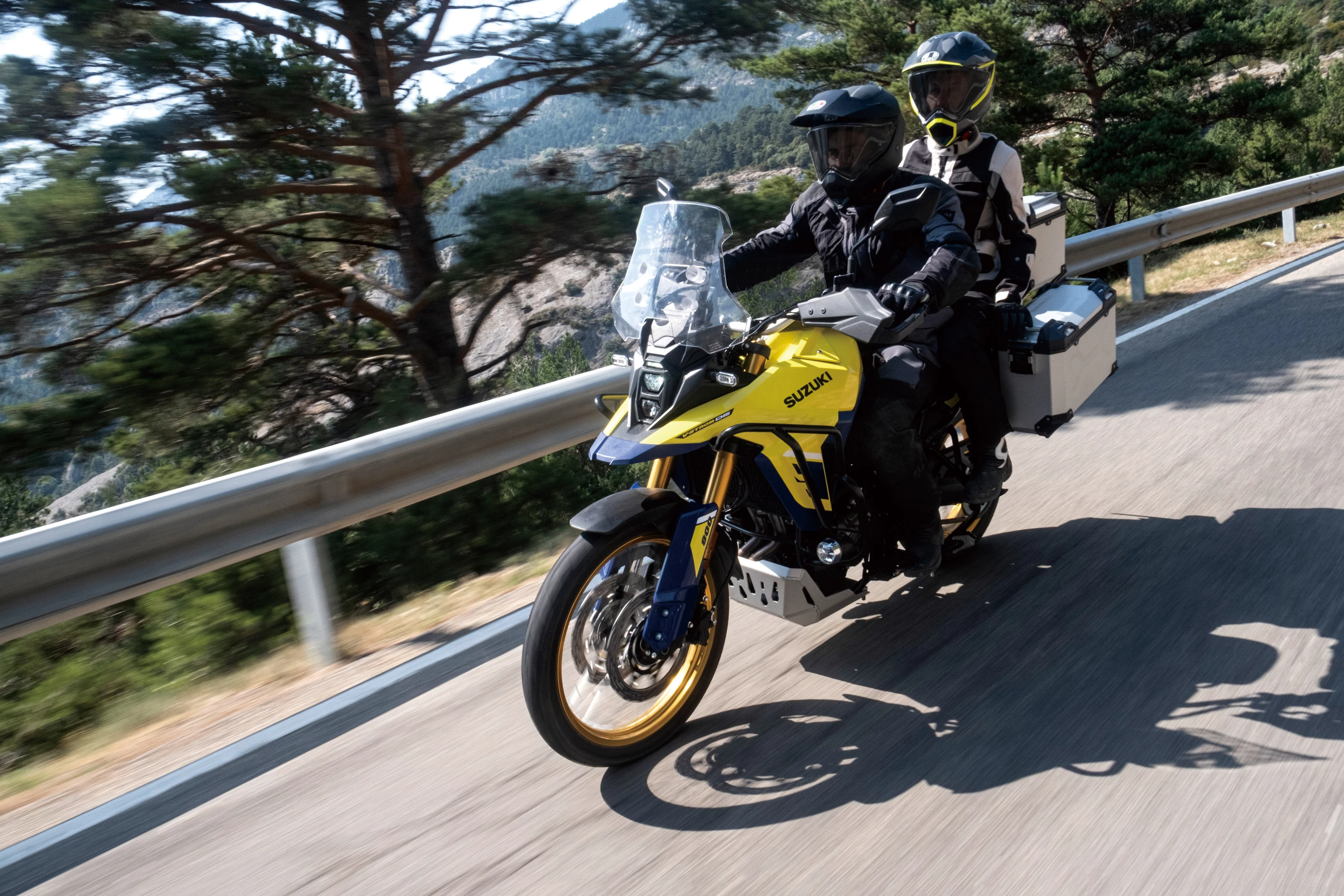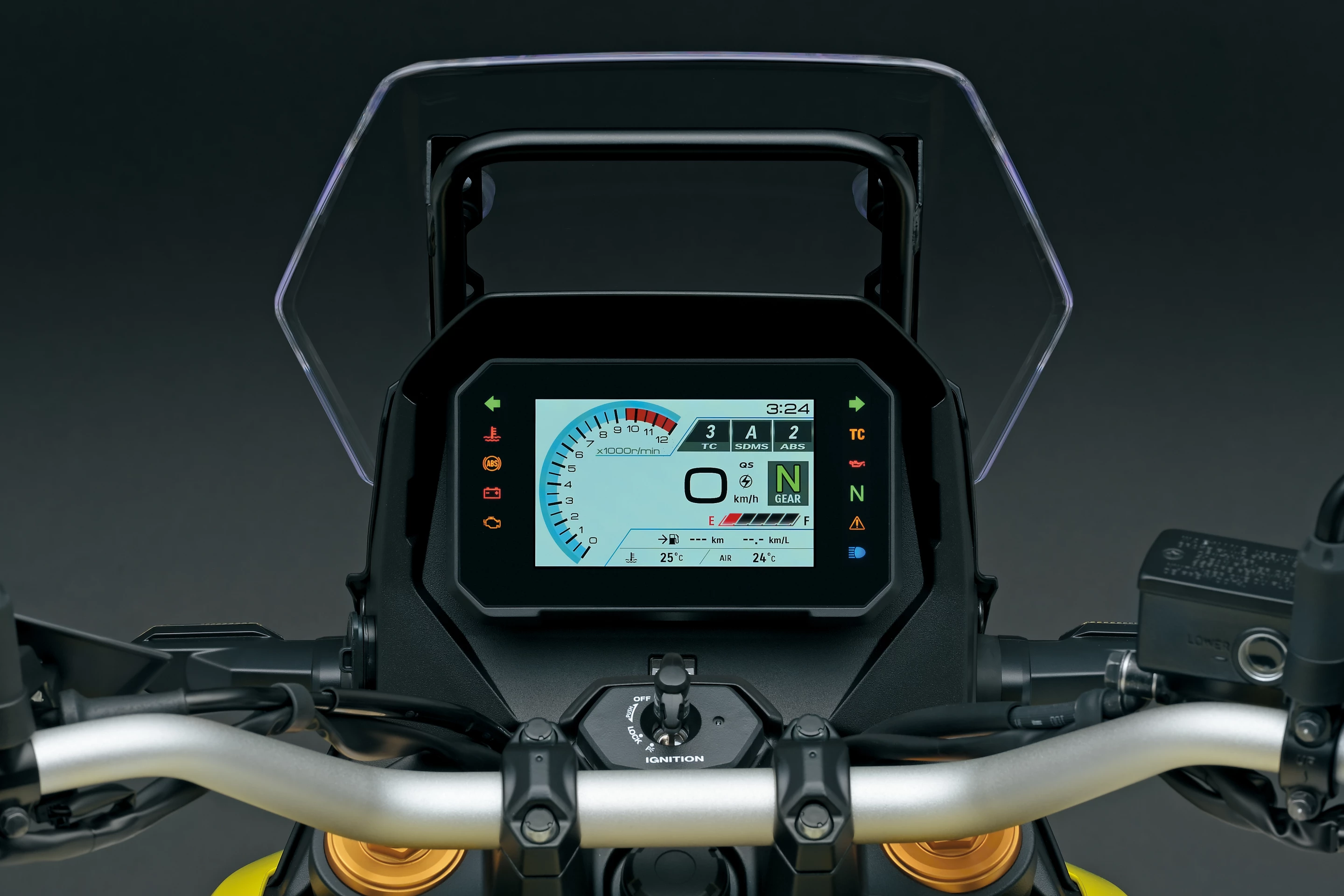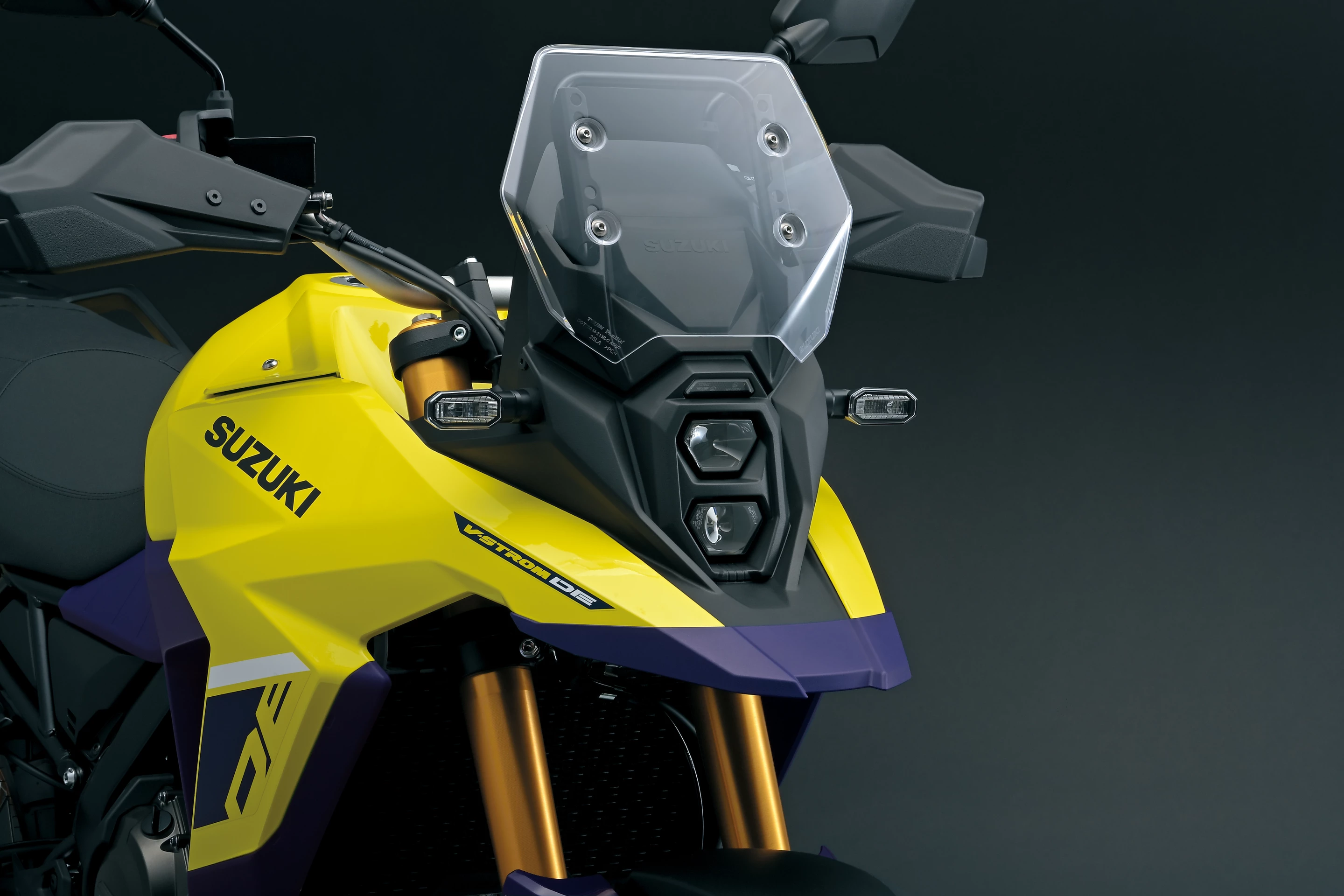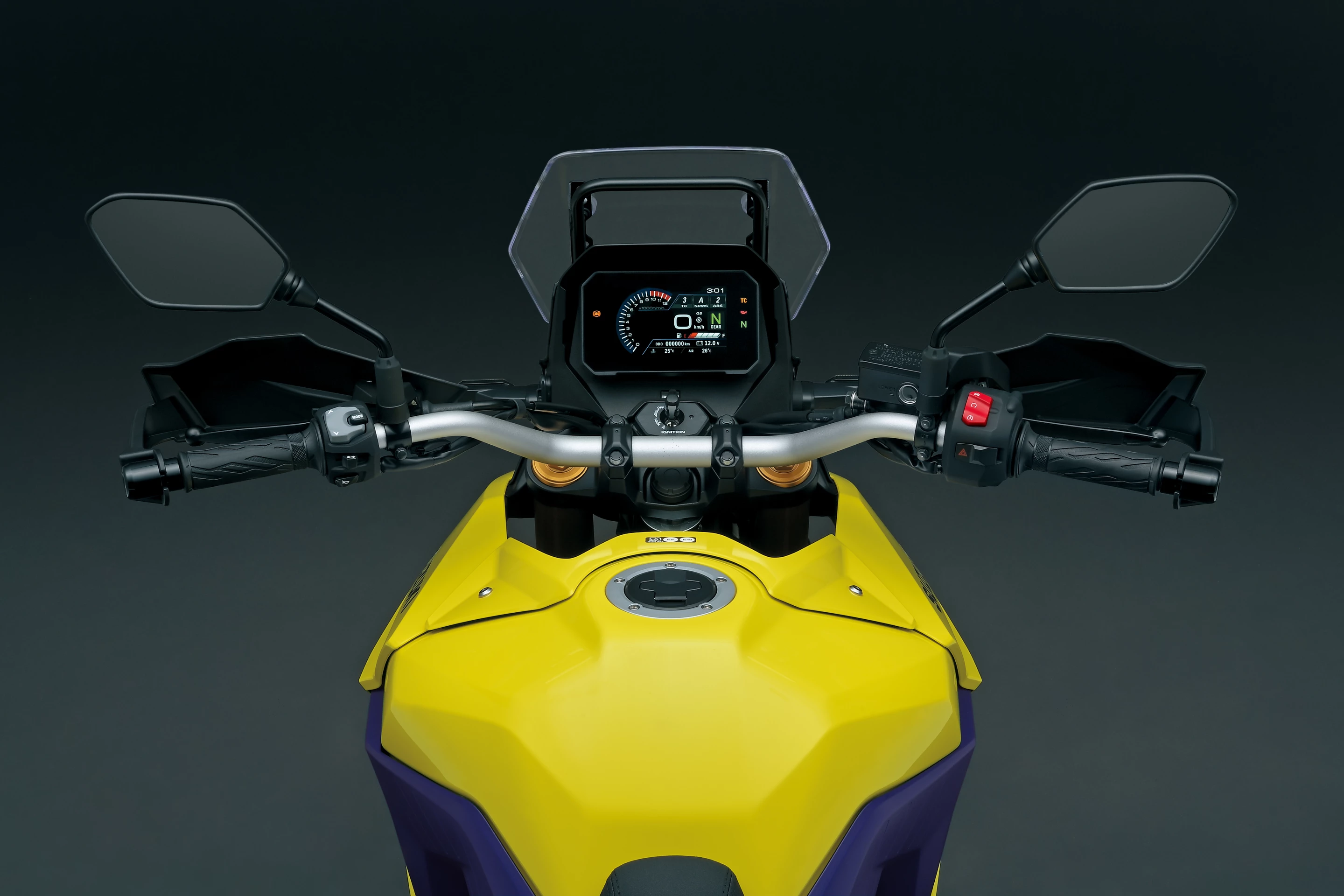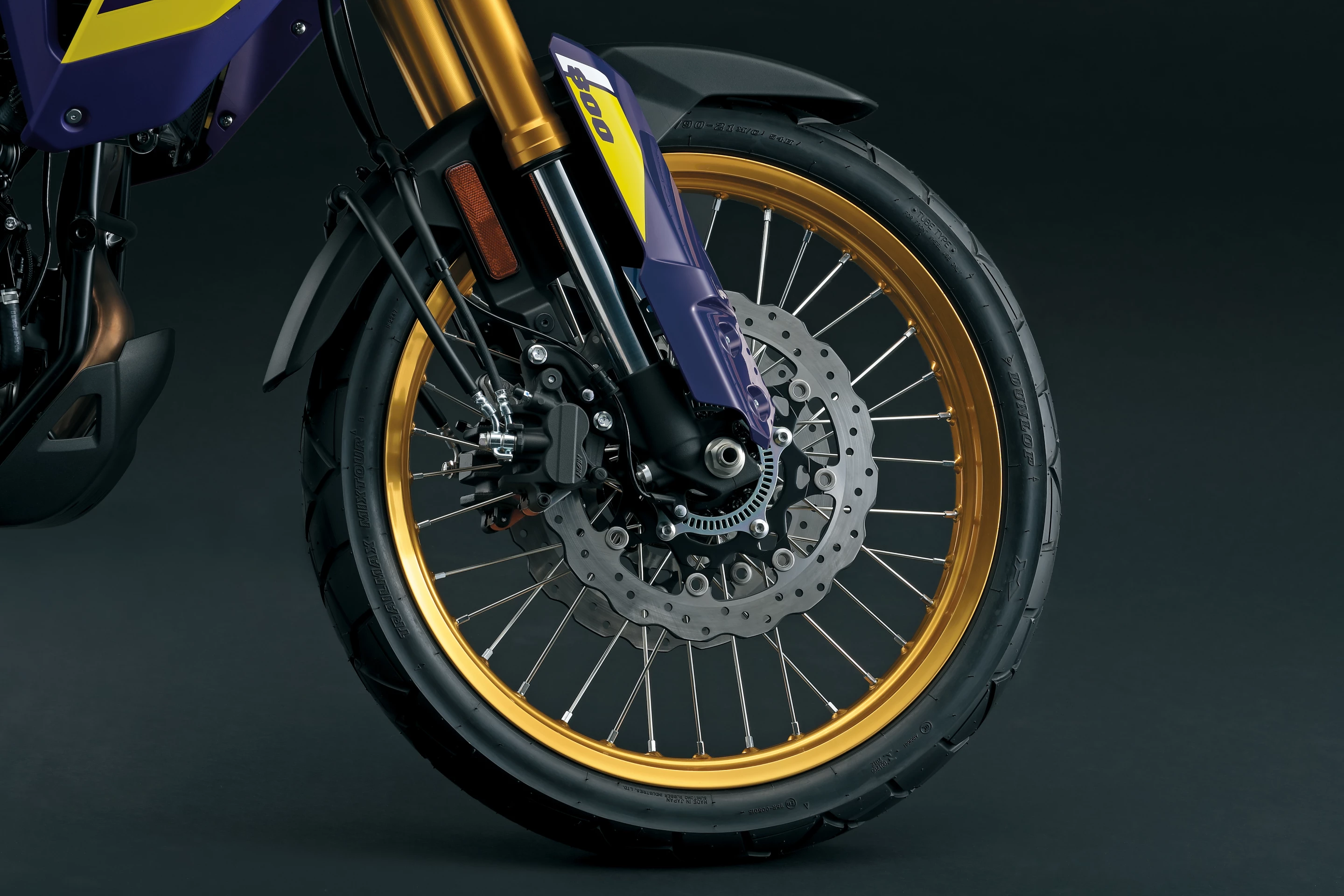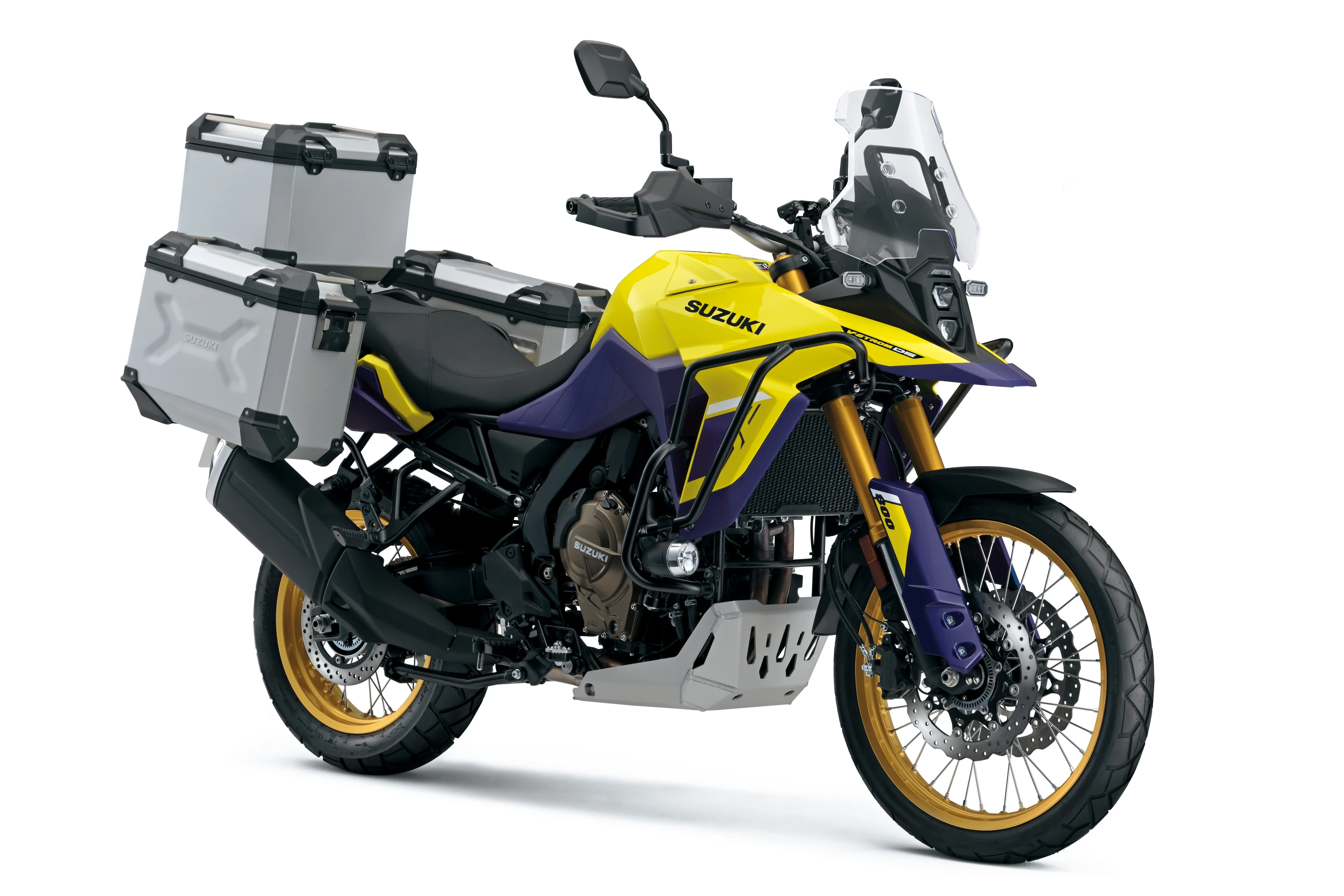One year shy of its 20th birthday, the V-Strom swaps its trademark V-twin for Suzuki’s brand new 776-cc inline twin, and puts on a 21-inch front wheel and tall suspensions. The result is an adventure touring package that can venture far from paved territory.
When the V-Strom 650 first arrived in 2004, two years after Suzuki had given birth to the family with the V-Strom 1000, it had its sights fixed squarely on the Honda Transalp that ruled its capacity class for a good 18 years.
The V-Strom 650 remained constantly in production, changing its vesture a couple of times but with very few mechanical advances, apart from the occasional euro-norm necessities. Despite staying loyal to its early-2000s tech, it has managed over 440,000 sales globally.

So, in a strange twist of strategic planning, both Suzuki and Honda broke out their new generations of V-Strom and Transalp respectively at the 2022 EICMA show.
Suzuki used the Italian show to reveal its first new motorcycle engine since the 2016 GSX-R1000 – with the obvious exception of off-road competition bikes – in a double feature with the also-new GSX-S8. The 776-cc inline twin with 270-degree crankshaft in V-Strom guise delivers 83 hp at 8,500 rpm and 7.9 kgm (57.1 lb-ft) at 6,800 rpm for a wet weight of 230 kg (507 lb), including a full 20-liter (5.3 gal) tank of fuel.
The new V-Strom 800DE keeps the V in the name – as Suzuki explains that it stands for Versatile rather than V-twin – and introduces the family to a 21-inch front wheel, a feature never before used in either the 650 or the 1000-cc models, that persistently rolled on 19-inch fronts. Suzuki also adds the tallest suspension to ever grace a V-Strom, with travel up to 220 mm (8.7 in) on both ends and an equal length of ground clearance.
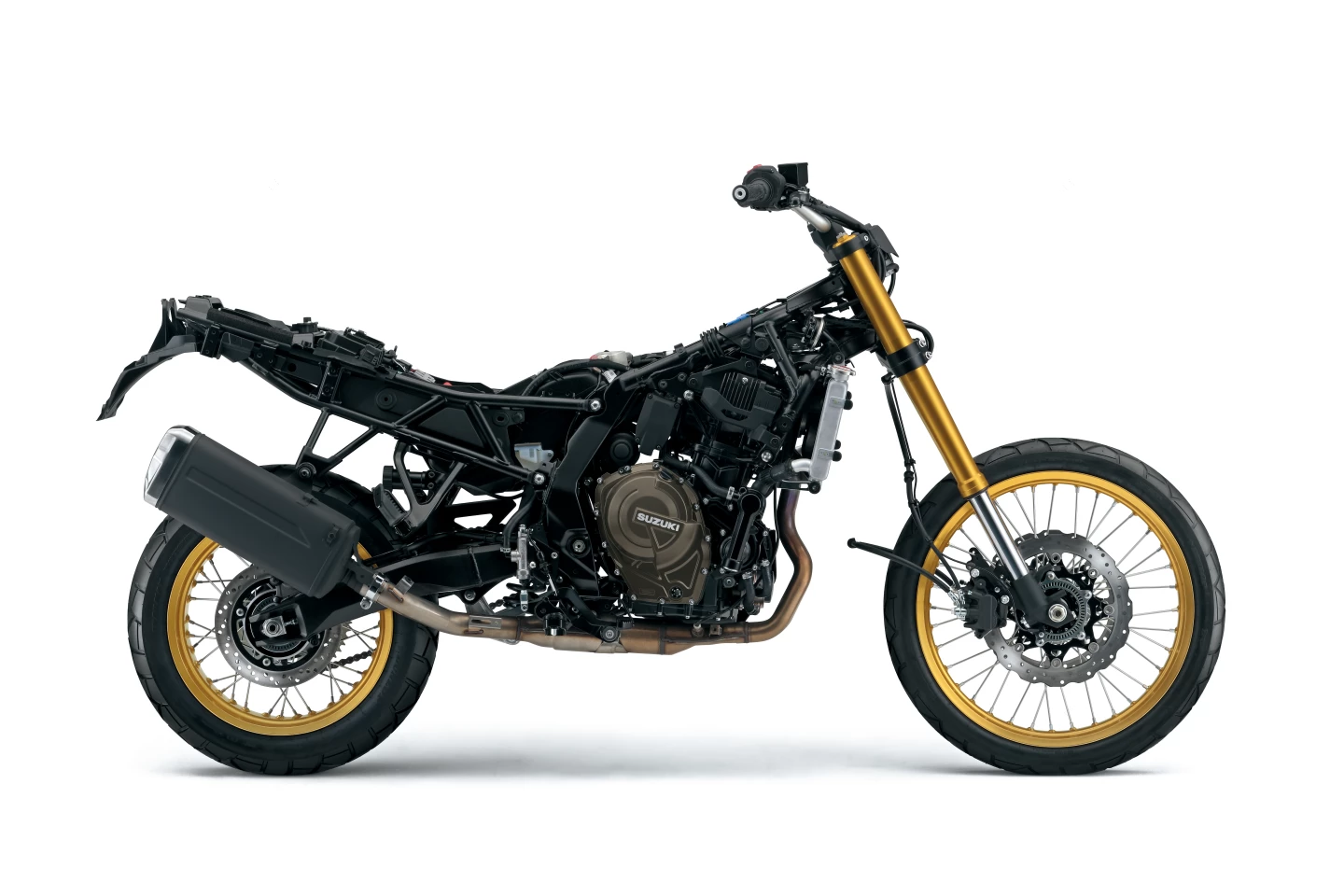
Rather than building a modular frame for both the GSX-S8 and the V-Strom, Suzuki designed a dedicated steel chassis for its adventure bike, dressing it with fully-adjustable Showa suspensions and Nissin brakes.
In terms of electronics, the new V-Strom 800DE didn’t receive inertial platforms and advanced cornering kits, but rather a conventional package with ABS, traction control and selectable engine modes. Everything is adjustable though, allowing for personalized fine tuning of all three aforementioned parameters. The ABS can be set to two levels of sensitivity, along with an off-road mode that deactivates the system at the back wheel. Similarly, the traction control kit offers four levels of intervention plus a G-mode specifically tailored for off-road use, and it can also be deactivated.
As for the Suzuki Drive Mode Selector, this can modulate the power delivery in three modes that differ in responsiveness, starting from the sharpest mode A down to the smoothest C.

These electronic services are part of a suite that Suzuki calls the Intelligent Ride System, and it also includes an easy start function and low rpm assist.
The styling of the new model seems like a hybrid design, with the body of the V-Strom 1050 and the twin vertically stacked headlights that are typical of Suzuki’s new GSX-S naked bikes. The characteristic beak is still there as a visual connection with the legendary DR Big, although it is somewhat surprising that Suzuki didn’t complete the look with a rectangular headlight, like on the 1050.
The 2023 V-Strom 800DE joins the latest trend that sees adventure bikes turn to 21-inch front wheels. Just a couple of months before the EICMA show, Suzuki introduced a similar version in the V-Strom 1050 family, also called DE and sporting the same wheel dimensions. Honda has also designed the XL750 Transalp accordingly, and even took it one step further by opting for an 18-inch rear, whereas Suzuki keeps it at 17 inches.

This is a selection clearly made in the interest of off-road riding, but it does come with an inherent compromise in twisty routes, where the huge front infuses the ride with understeer and makes handling perceivably slower. As for the tube-type rims and tires, they make sense only as an off-road feature, but can be more of a liability on the highway, both in terms of safety and ease of service.
The success of the V-Strom was never based on its enduro skills, but rather on its all-around ability, and the same goes for the Honda Transalp as well. So could this transformation into a more specialized motorcycle mean that sometime soon we’ll also get a more road-oriented variant? Probably not immediately, as the V-Strom 650 will still be here for at least another couple of years.
In the meantime, it seems that both Suzuki and Honda have a common target fixed in their crosshairs: the Yamaha Ténéré 700.
Source: Suzuki

